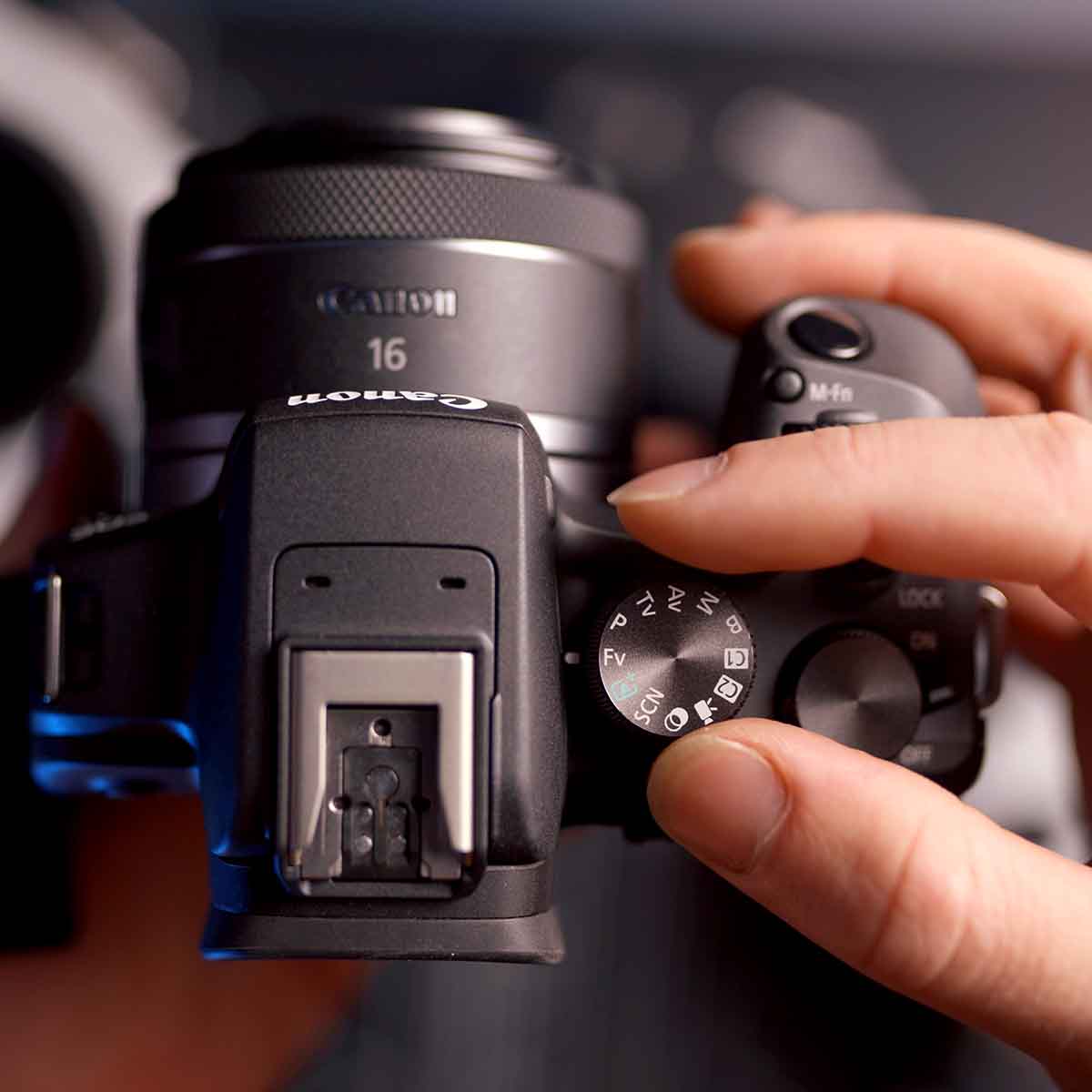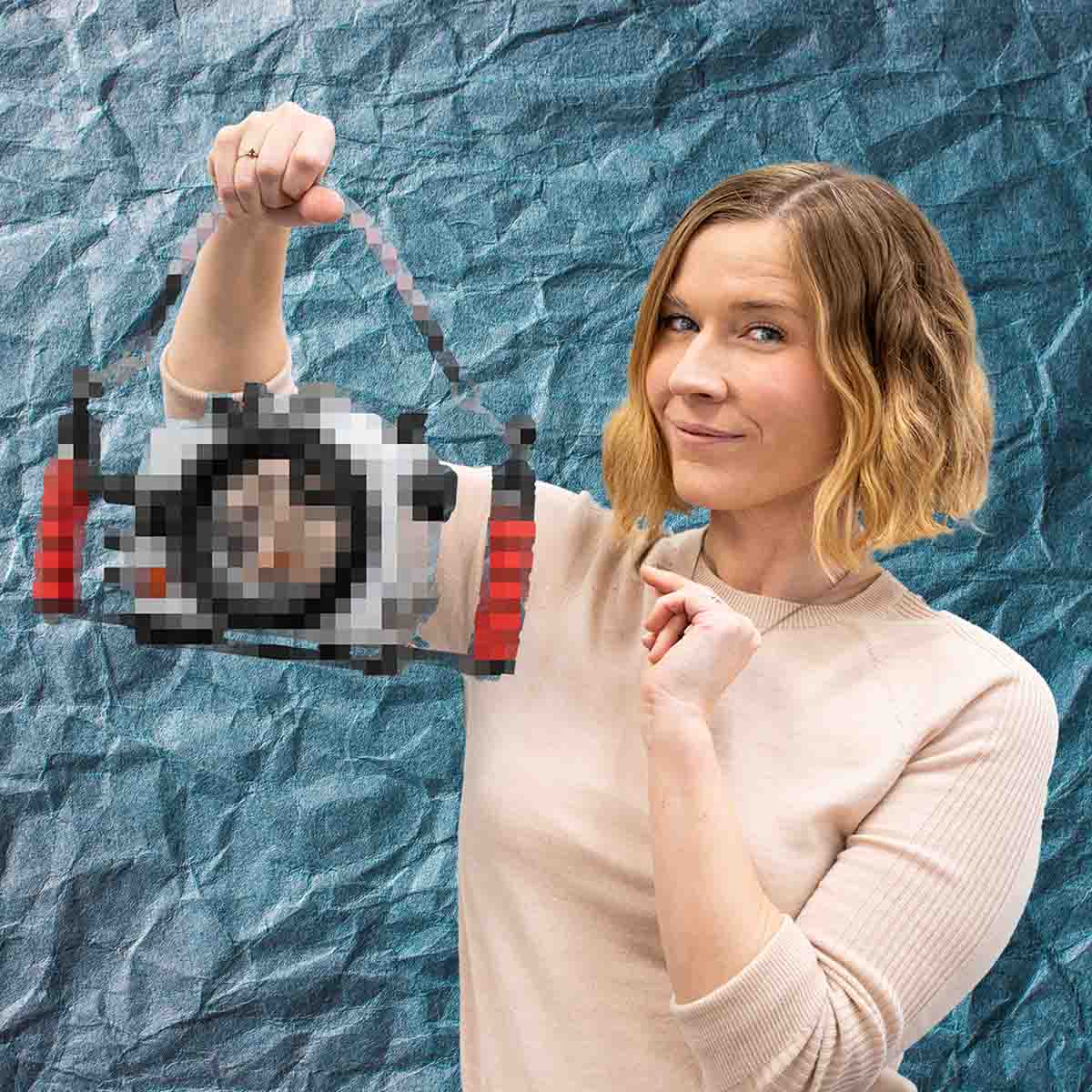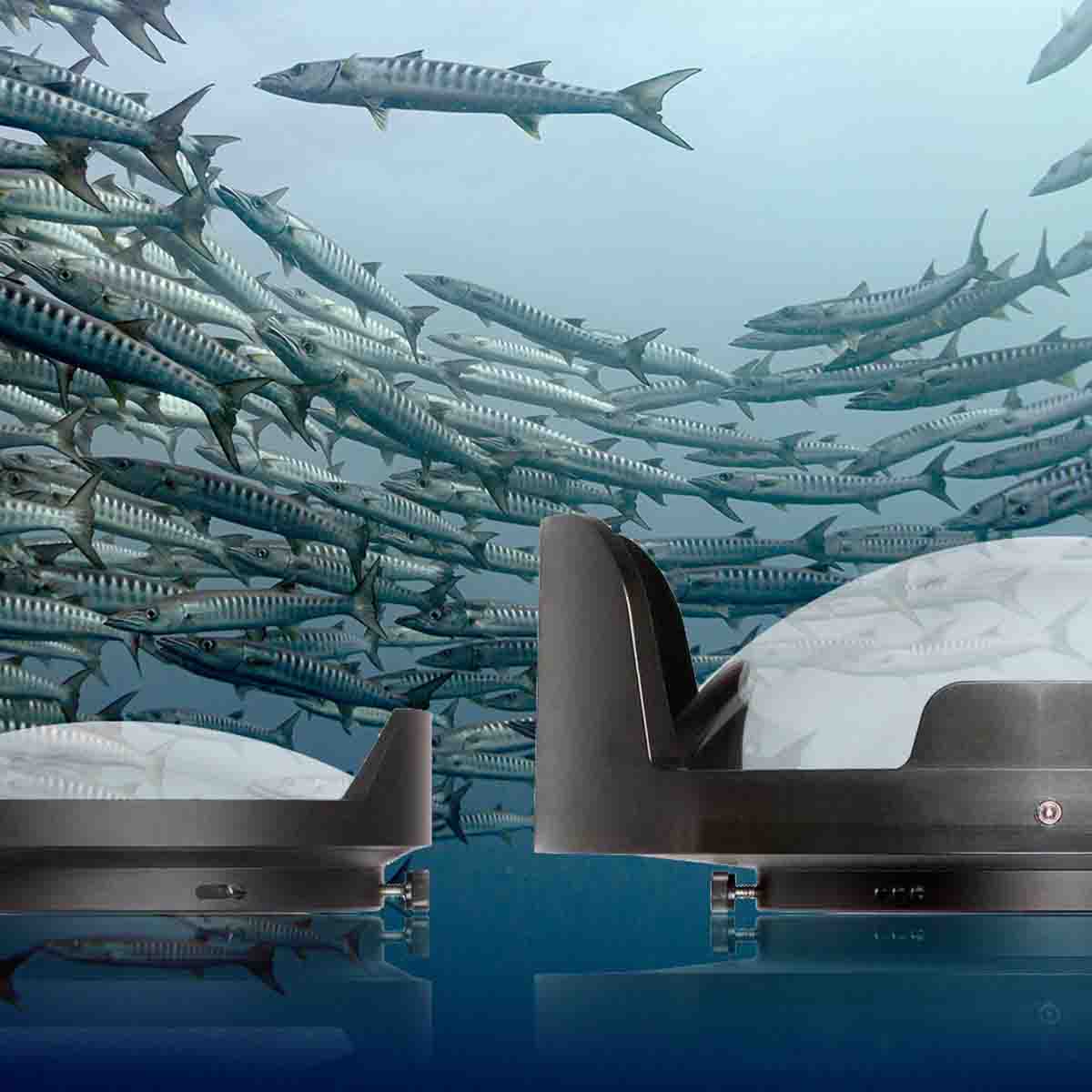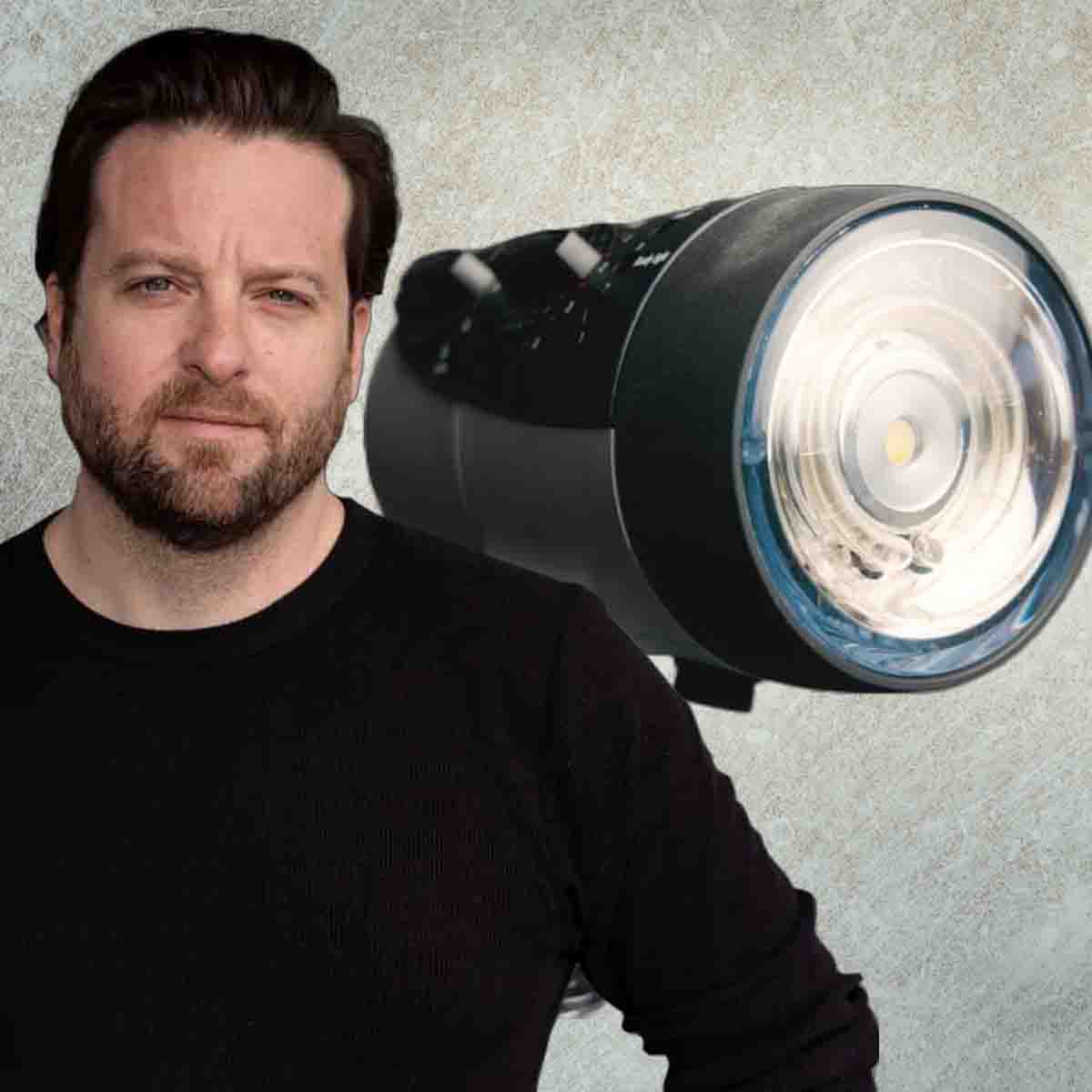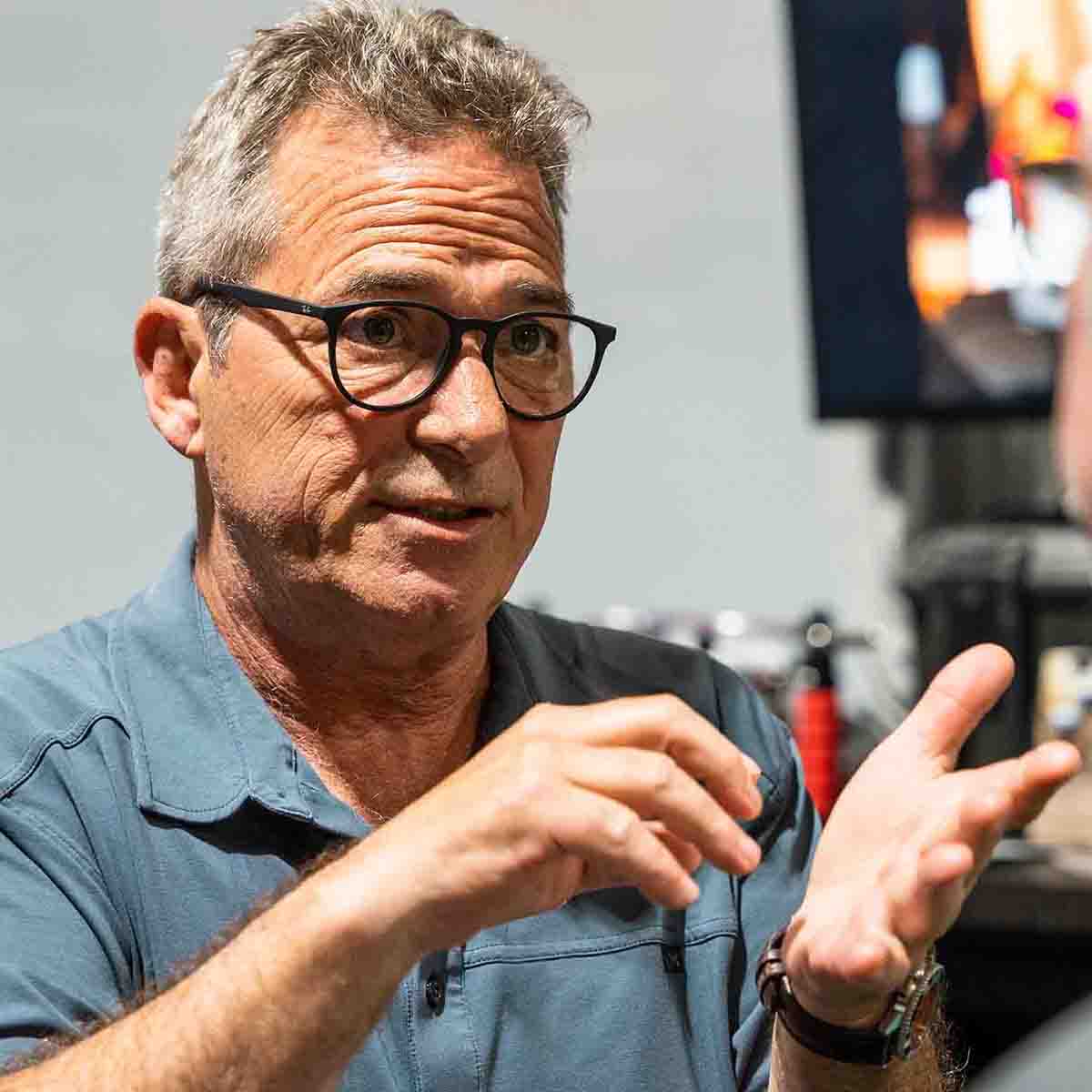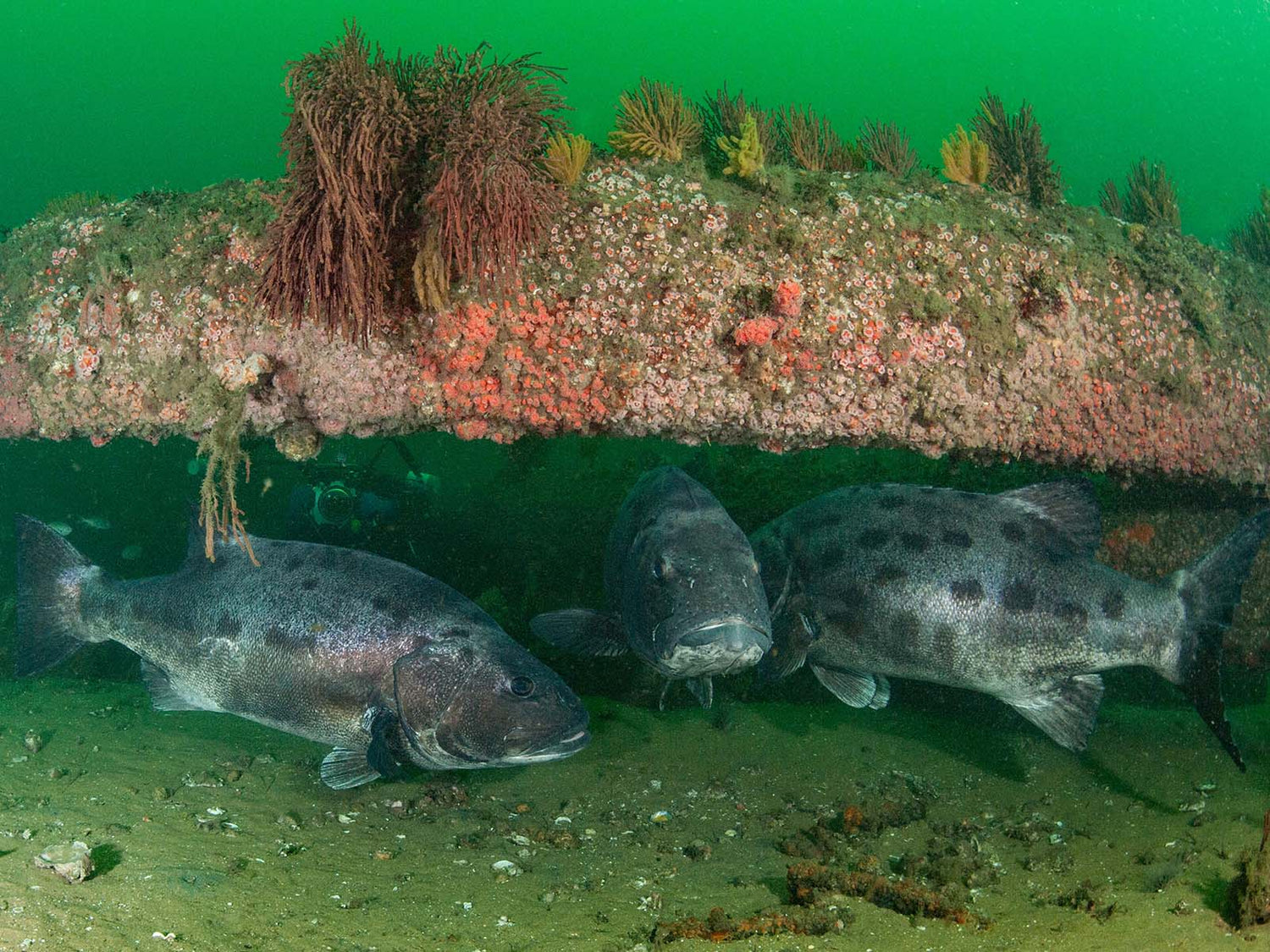By Macey Hartmann
Wide-eyed divers surface at Casino Point on Catalina Island, arms outstretched, struggling to describe the refrigerator-sized shadow that materialized behind them in the kelp. The giant sea bass (Stereolepis gigas), affectionately dubbed "the king of the kelp forest", has become one of the most sought-after encounters in Southern California waters. These gentle giants can reach seven and a half feet (2.1 meters) long, weigh over 550 pounds (227 kg), and live for 75 years; yet just decades ago, they teetered on the brink of extinction.
Your underwater photographs of these remarkable fish – now declared critically endangered – do more than capture bragging rights. Through the Spotting Giant Sea Bass research project at the University of California, Santa Barbara, your Ikelite housing becomes a powerful conservation tool. Each photo of a giant sea bass submitted to the database helps researchers understand one of conservation's most mysterious comeback stories, all while you follow the journey of the very fish with whom you came face-to-face.
An example of a photo identification match of GSB136, aka “Tri-Tail”
Left Photo Credit: Kimberly Pye. Right Photo Credit: Conor McCracken.
Why Every Photo Matters
Each giant sea bass carries a distinct pattern of spots on both its left and right flanks, creating a unique “fingerprint” that remains unchanged throughout its adult lifetime. When divers submit their “giant sea bass selfies”, researchers use advanced computer algorithms to identify individual fish. This algorithm was originally developed by astrophysicists to identify patterns in star constellations and was later used by NASA with the Hubble telescope. Through this method, your casual snapshot of a giant sea bass might reveal that you've just photographed GSB136, affectionately known as "Tri-Tail," a fish that's been seen over 22 times in waters surrounding Catalina Island. You might even catch a video of her releasing a “sonic boom”, swallowing an angel shark whole, getting cleaned by an array of parasites, or demonstrating her courtship dance. This photo-identification technique enables the long-term monitoring of individual fish, providing crucial data on population size, age structure, habitat preferences, behavior, and seasonal movements.

Ikelite Ambassador, Bruce P Hall, spots GSB582 at Casino Point on Catalina Island.
Photo Credit: Bruce P Hall.
Community Engagement
The Spotting Giant Sea Bass project breaks down the traditional barriers between professional scientists and recreational ocean enthusiasts – all you need is curiosity and a camera! When a diver submits photos from an encounter with a never-before-seen individual, researchers invite them to choose a nickname for their discovery, creating a personal connection that turns a chance underwater meeting into a lasting relationship. Ikelite Ambassador Bruce Hall exemplifies this journey from underwater photographer to community scientist. With 42 encounters in the database and counting, Hall has become familiar with individuals such as Fat Albert, Queen Juliet, and Mojito. "Getting updates on their whereabouts is priceless," Hall says, describing how each notification about his fish being spotted by other divers piques his curiosity and connects him to the species and the broader diving community.
Kayla Feairheller, founder of Bleu World and dive guide, has integrated giant sea bass research into her expedition programming. Last summer, Feairheller's expedition took an unexpected turn when she encountered a giant sea bass at Casino Point with a fish skeleton lodged in its mouth. After carefully removing the obstruction, she submitted her photos to the project. Researchers identified the fish as GSB098, an individual encountered 11 times in the database dating all the way back to 2009. This single intervention, documented and shared, became part of a 16-year story of survival.
Snapshots and Scientific Discoveries
Critically, divers have the opportunity to witness tangible conservation outcomes of their participation: their collective documentation has contributed to the first direct population estimate of the giant sea bass in Southern California. Published in the scientific journal Marine Ecology Progress Series, Andrew Pettit of UC Santa Barbara’s Benioff Ocean Science Laboratory estimated that there are just over 1,200 adult giant sea bass within Southern California waters. Although a promising indicator of conservation progress, recovery is still a long way away for the species, considering historical numbers were likely orders of magnitude higher.

Ikelite Ambassador Douglas Klug photographs GSB187 at Cathedral Point on Anacapa Island.
Photo Credit: Douglas Klug.
Joining this mission is as simple as diving with your camera, submitting your giant sea bass photos to the Spotting Giant Sea Bass project, and spreading the word to fellow divers. Your Ikelite housing carries the power to document the recovery of a species, one photograph, one identification, and one story at a time.
Read the Latest Research
Using community science to assess the population dynamics and spatial ecology of the giant sea bass in Southern California by Andrew Pettit, Miranda Haggerty, Molly Morse, Francis Joyce, Conner Jainese, Katelin Seeto, and Douglas McCauley
Connect with the Spotting Giant Sea Bass Project
Submit your photos! The collaborative process keeps participants engaged through regular updates via Instagram, email newsletters, scuba shows, and outreach events.
Additional Viewing
An Insider's Guide to Shore Diving Catalina Island
The Power of Underwater Photography for Ocean Conservation
Underwater Cathedrals: Shooting Magnificent Kelp Forests
The Atlantics Manta Ray Confirmed as a New Species: A Breakthrough in Manta Research
From Research to Outreach: Underwater Photography as a Tool for Science

Macey Hartmann is a 4th-year Environmental Studies major at the University of California, Santa Barbara. Macey is the Undergraduate Project Lead for the Spotting Giant Sea Bass Project within the Benioff Ocean Science Laboratory. Macey hopes the project inspires everyday ocean enthusiasts to become powerful advocates for marine conservation, turning each underwater encounter into meaningful data that helps protect these magnificent fish for generations to come.




